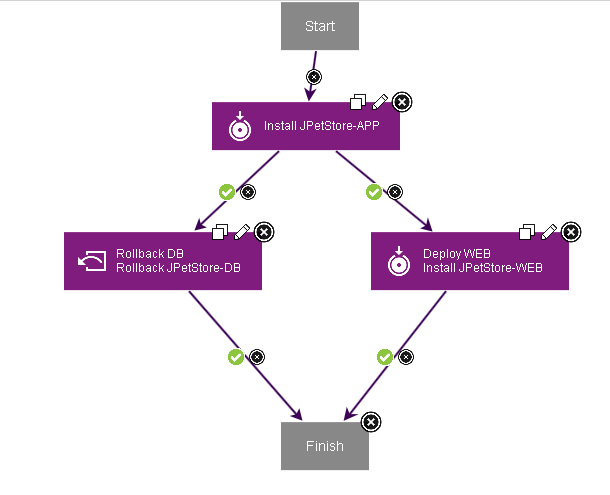Before you begin
- Create a snapshot that includes the component versions to be restored. Snapshots are typically made for every completed deployment, especially for deployments in critical environments.
- Create an uninstall-type process for each component to be rolled back. For information about uninstalling component versions, see Uninstalling components with an application process.
About this task
For a video demo of rolling back components, see Rollback Scenarios in IBM UrbanCode™ Deploy .
When you roll back to a snapshot in this way, the server runs the uninstallation process for each component version that is not in the snapshot. The server runs the uninstallation processes in the reverse order in which it deployed the versions, starting with the most recently deployed version and ending with the version that was deployed first. Only the versions in the snapshot are left on the environment.
This method is intended to uninstall incremental versions, but you can also use it to uninstall full versions. However, for full versions, in many cases, it is simpler to install the new full version over the existing full and incremental versions.
This method works best for component versions that are already deployed, regardless of whether the deployments of those versions were completed. As an alternative, you can add a step that immediately rolls back deployments of versions that were not completed; for that method, see Rolling back components that fail to deploy.

